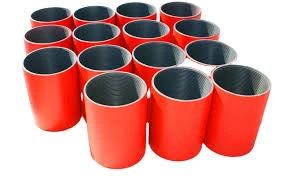- Afrikaans
- Albanian
- Amharic
- Arabic
- Armenian
- Azerbaijani
- Basque
- Belarusian
- Bengali
- Bosnian
- Bulgarian
- Catalan
- Cebuano
- Corsican
- Croatian
- Czech
- Danish
- Dutch
- English
- Esperanto
- Estonian
- Finnish
- French
- Frisian
- Galician
- Georgian
- German
- Greek
- Gujarati
- Haitian Creole
- hausa
- hawaiian
- Hebrew
- Hindi
- Miao
- Hungarian
- Icelandic
- igbo
- Indonesian
- irish
- Italian
- Japanese
- Javanese
- Kannada
- kazakh
- Khmer
- Rwandese
- Korean
- Kurdish
- Kyrgyz
- Lao
- Latin
- Latvian
- Lithuanian
- Luxembourgish
- Macedonian
- Malgashi
- Malay
- Malayalam
- Maltese
- Maori
- Marathi
- Mongolian
- Myanmar
- Nepali
- Norwegian
- Norwegian
- Occitan
- Pashto
- Persian
- Polish
- Portuguese
- Punjabi
- Romanian
- Russian
- Samoan
- Scottish Gaelic
- Serbian
- Sesotho
- Shona
- Sindhi
- Sinhala
- Slovak
- Slovenian
- Somali
- Spanish
- Sundanese
- Swahili
- Swedish
- Tagalog
- Tajik
- Tamil
- Tatar
- Telugu
- Thai
- Turkish
- Turkmen
- Ukrainian
- Urdu
- Uighur
- Uzbek
- Vietnamese
- Welsh
- Bantu
- Yiddish
- Yoruba
- Zulu
casing threads and couplings
Understanding Casing Threads and Couplings in Oil and Gas Industry
In the oil and gas industry, the ability to extract resources safely and efficiently is paramount. A critical component of this process involves understanding casing threads and couplings, which play essential roles in the structural integrity of drilling operations.
What Are Casing Threads?
Casing threads refer to the threaded connections found on the ends of drill pipes and casing pipes. These threads are meticulously designed to ensure a secure fit, allowing for the transmission of high-pressure fluids and gases from the subterranean environment to the surface. The design and quality of these threads are paramount, as they need to withstand the immense stresses and forces generated during drilling activities.
The most common types of casing threads are the American Petroleum Institute (API) threads, which have standardized dimensions and profiles. API threads are generally classified into various categories, including buttress threads, round threads, and square threads. The specific choice of thread design depends on factors such as well depth, type of formation, and the nature of the operations being performed. Engineers must carefully consider these variables to select the appropriate casing threads for a project.
What Are Couplings?
casing threads and couplings

Couplings are mechanical devices used to connect two sections of pipe. In the context of casing strings, they are essential for joining multiple lengths of casing pipe together while also providing additional strength and sealing capabilities. Couplings can be categorized into several types, including threaded, welded, and slip-on couplings, with threaded couplings being the most common in the oil and gas sector.
Threaded couplings feature internal threads that engage with the external threads on the casing pipes. This design allows for easy assembly and disassembly, which is crucial during drilling operations where modifications and repairs are often necessary. It is important for couplings to be made from high-grade materials to resist corrosion and wear caused by harsh downhole conditions.
Significance in Drilling Operations
Casing threads and couplings are vital components that ensure the safety and efficiency of drilling operations. They provide structural support to the wellbore, preventing collapse and controlling pressure from the reservoir. Additionally, they serve as barriers against unwanted fluids and gases, helping to protect both the environment and the workers in the field.
Moreover, advancements in technology have led to the development of enhanced threading and coupling designs that offer improved performance and reliability. These innovations are critical as the industry continues to face challenges associated with deeper drilling and harsher environments, pushing the limits of current technology.
In conclusion, casing threads and couplings are fundamental elements of drilling operations in the oil and gas industry. Their proper design, manufacturing, and application directly influence the success and safety of drilling activities, making them an area of continuous research and development. As the industry evolves, so too will the technology surrounding these critical components, ensuring that drilling operations can meet the demands of the future.
-
Tubing Pup Joints: Essential Components for Oil and Gas OperationsNewsJul.10,2025
-
Pup Joints: Essential Components for Reliable Drilling OperationsNewsJul.10,2025
-
Pipe Couplings: Connecting Your World EfficientlyNewsJul.10,2025
-
Mastering Oilfield Operations with Quality Tubing and CasingNewsJul.10,2025
-
High-Quality Casing Couplings for Every NeedNewsJul.10,2025
-
Boost Your Drilling Efficiency with Premium Crossover Tools & Seating NipplesNewsJul.10,2025







